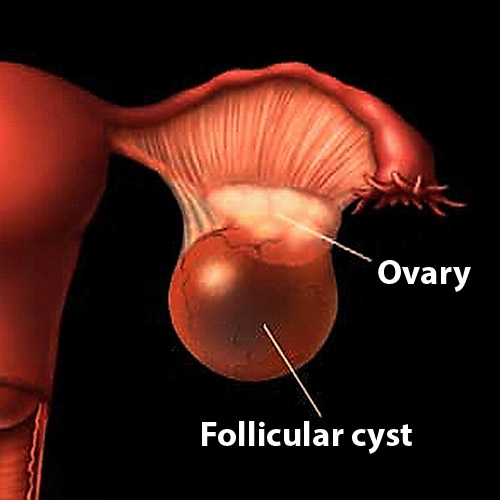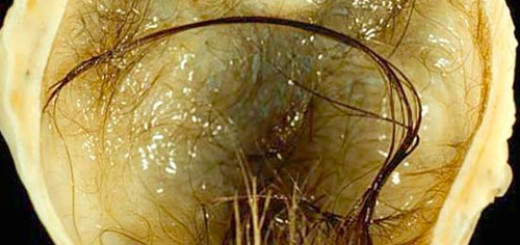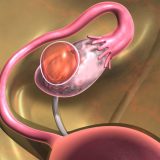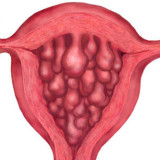
Follicular cyst of the ovary belongs to the group of functional cysts. This means that this type of cyst can independently, often without any treatment, to disappear. But sometimes it can cause some serious problems. For better understanding causes follicular cysts, you need to remember the changes that occur in the ovaries during the menstrual cycle.
Since my teenage years, every month one of the ovaries grows and Matures liquid vial containing the egg. This bubble is called the follicle. The growth process begins immediately after menstruation and mid-cycle follicle reaches 2 cm in diameter. On day 14-16 of the cycle occurs the rupture of the follicle and release of an egg from the ovary for subsequent fertilization in the fallopian tube. This is ovulation. After ovulation at the site of ruptured follicle forms the “yellow body” and the wall of the follicle dissolves itself.
All of the above changes clearly regulated by sex hormones. And disrupting the normal interaction of different hormones, the conditions for the emergence of a follicular cyst. Obligatory condition of its formation is the absence of ovulation. Without ovulation, the follicle may continue to grow, and so forms a follicular cyst. Its size can vary widely from 3 to 10 cm.
For a Long time capsule of the cyst contains a layer of cells that cause the resorption of follicular cysts. In most cases during the first 6 months of follicular cyst disappears on its own.
The simplest and Most informative method diagnosis of follicular cyst remains ultrasonography (USG).
Symptoms of follicular ovarian cyst.
Symptoms of follicular ovarian cysts are largely determined by the reasons of its occurrence and hormonal disorders and lack of ovulation. Because of this, maybe irregular menstrual cycle, a missed period and no pregnancy. Fortunately, these symptoms are usually temporary and of short duration.
Another possible symptom that gives follicular cyst — pain. The intensity depends on the amount of education. At small sizes (up to 3-4 cm) cyst rarely manifests itself, and some women may not even know about the appearance and subsequent disappearance have follicular cysts. Usually the problems start when a significant tumor size. Usually the pains are constant, aching in nature, may increase after exercise, given in the lower back or in the leg.
Pretty severe symptoms of follicular ovarian cysts appear in case of complications. The most common complication is rupture of the follicular cyst. This is due to the fact that the capsule follicular cysts are usually very thin and can be easily damaged. This most often occurs after sexual contact, physical activity, sudden movements. The severity of symptoms of follicular rupture of the cyst depends on its size – from mild discomfort in the abdomen to sharp pains, with nausea and vomiting. Fortunately, in most cases with rupture of the cyst of a yellow body manages to cope without surgery.
Treatment of follicular ovarian cyst.
The Most effective method of treatment of follicular ovarian cysts currently taking oral hormonal contraceptives. This eliminates the effect of hormones on the growth of the cysts and promotes its rapid resorption. Read more about this in the article “treatment of ovarian cysts”. At the time of treatment I would advise patients to minimize excessive physical activity, rough sex, fitness classes. This will avoid rupture and torsion follicular ovarian cyst.
Conclusions:
So, follicular cyst:
- Only Happens in menstruating women
- In 90% of cases go away on their own
- Hormonal contraceptives accelerating dissolution
- The Most frequent complication of rupture (apoplexy)
- Often similar to the serous cystadenoma
What to do?
If You have a follicular cyst, consult your gynecologist about the possibility of hormonal contraceptives. The optimal duration of treatment/follow — up 6-8 months. Observe restrictions on the regime for the prevention of complications (especially when the size of the cyst more than 4-5 cm).












